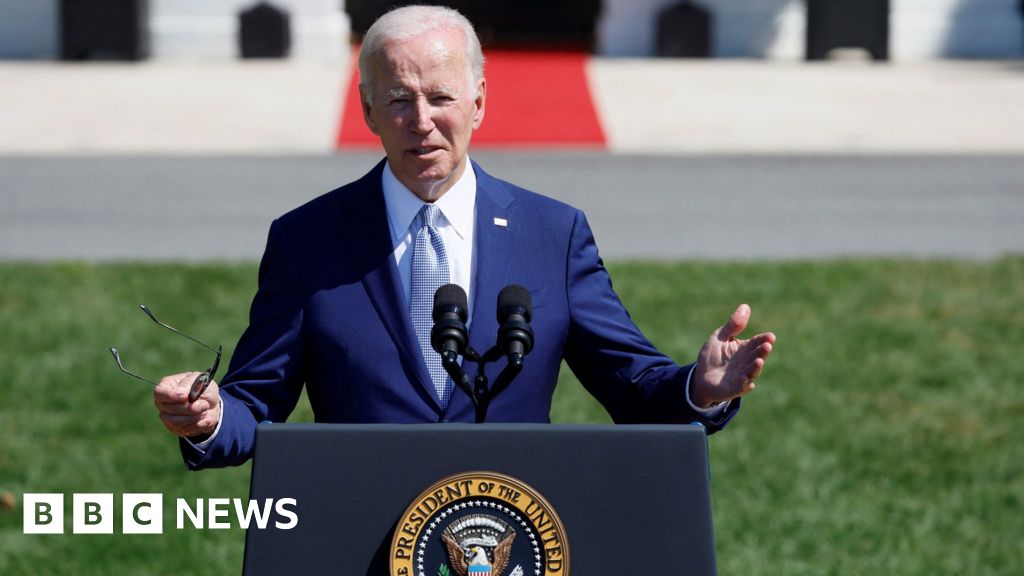As Russia’s unprovoked invasion of Ukraine staggers through its sixth month, the risk of a catastrophic nuclear war between Russia and NATO grows with each bloody day. That might come as a surprise to Americans, for whom the conflict is now mostly an abstraction. But unless Russian and Ukrainian leaders can find an off-ramp for this destructive conflict, the tiny but real chance of Armageddon will compound like interest on a loan.
There are multiple red flags suggesting that we are in more danger than we realize—much more so than when the invasion began. Russia is using Europe’s largest nuclear plant, Zaporizhzhia, as a shield to launch artillery attacks, a situation ripe for catastrophe. How would Western countries react to a meltdown triggered by Russian malfeasance, or one caused by an errant Ukrainian air or drone strike? What if Russia triggered a Chernobyl-style disaster and attempted to pin the blame on someone else as a pretext for nuclear escalation? Russian President Vladimir Putin is credibly suspected of engineering false flag attacks in the past, so it’s not crazy to think he would do it again on a grander scale.
But the biggest risk is, paradoxically, the situation itself: Ukraine’s success in repelling the initial Russian push into Kiev, avoiding the quick regime decapitation Putin sought, and transforming the war into a slog that offers little hope of either side achieving its maximal goals. Nuclear powers facing defeat or quagmire have considered introducing these terrible weapons in the past—U.S. President Harry Truman in the darkest hours of the Korean War, the French during the 1954 Dien Bien Phu siege in Vietnam and the Soviets during the Yom Kippur War.
Just because those who contemplated global annihilation in the past stepped away from the brink is no guarantee that today’s leaders will do the same. If anything, the fact that Ukraine seems so important to Putin—more so than Vietnam or Korea or perhaps even Cuba to the Americans—only makes the risk that he will violate the nuclear taboo even higher. Add in the accumulated grievances of war—the global humiliation of the early war, the deaths of thousands of Russian troops at the hands of Western weapons, the economic misery and emigration caused by sanctions—and you can see how someone might decide to behave irrationally.
DIMITAR DILKOFF/AFP via Getty Images
Would Russia use nuclear weapons to break the stalemate, or to permanently wipe swathes of western Ukraine off the map? As deranged as that may seem, Russia has shown no reservations about inflicting inhumane violence on civilian populations in the past.
It’s not a purely theoretical concern. Current Russian military doctrine reserves the right to use nuclear weapons both in retaliation for a nuclear attack as well as in the event of “aggression against the Russian Federation with the use of conventional weapons when the very existence of the state is in jeopardy.” That’s why it is so unnerving to hear people in Putin’s inner circle speaking in terms of existential threats.
In a terrifying interview with the New York Times last month, Russian political scientist and Putin advisor Sergey Karaganov warned of the “growing probability of a global thermonuclear conflict ending the history of humanity.” Arguing that Russia would settle for nothing less than the “liberation” of eastern and southern Ukraine from the “Kievan regime,” Karaganov also hinted that Putin views the conflict in precisely the kind of apocalyptic terms that could lead to nuclear escalation. “For Russia,” Karaganov says, “this conflict is about preservation not only of its elites, but the country itself.”
This is not a call for Ukraine to capitulate. But it is important for Ukraine’s allies, who are prosecuting what Bonnie Kristian called “not not war” to have an exit strategy, clearly communicated red lines and open channels of communication with Moscow. Putin’s statement to the U.N. that “there can be no winners in a nuclear war, and it should never be unleashed” is a good start, but only a swift end to the war can truly lift the specter of calamity from the world.
David Faris is an Associate Professor of Political Science at Roosevelt University and the author of It’s Time to Fight Dirty: How Democrats Can Build a Lasting Majority in American Politics. His writing has appeared in The Week, The Washington Post, The New Republic, Washington Monthly, and more. You can find him on Twitter @davidmfaris.
The views expressed in this article are the author’s own.

















Discussion about this post